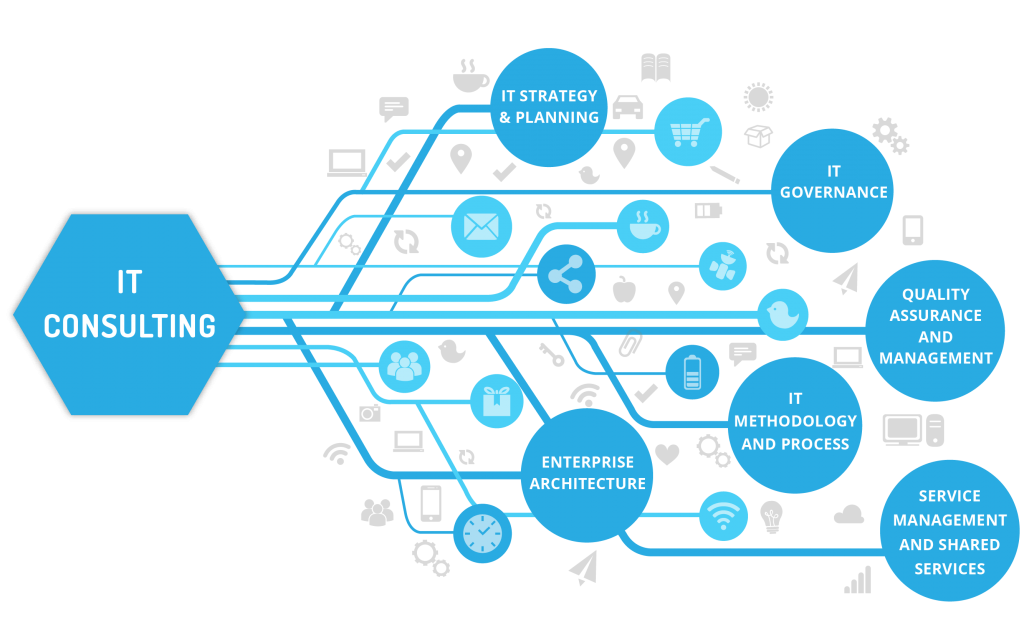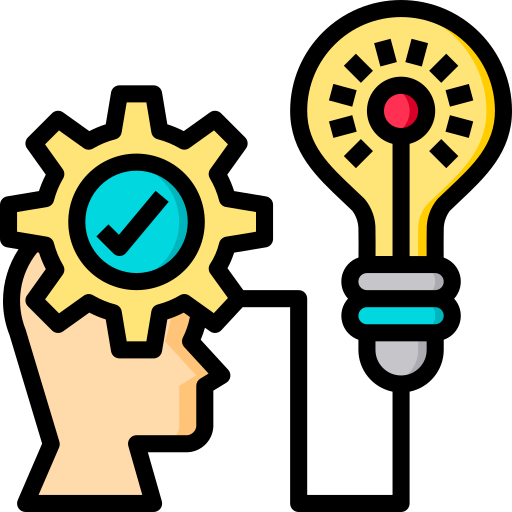

Are you interested in IT Consultancy services?
Professional and Advisory Services
To advance your digital transformation, seek professional guidance and execution.
Get a quote Get a quote

Analyze
A deep and thorough analysis is the key to find the problem areas and to brainstorm the solution. Thus this can be considered as the primary step to reach the collective goal. The feedback from the clients can provide better understanding regarding the application’s performance.
Strategize
Once the problems are identified, it’s time to look for solutions. With solutions, there comes a need to strategize the process to implement these solutions because, without a strong strategy, everything may seem to fall out of place. Just having solutions won’t do much when strategies aren’t developed.
Improvements
The performance analysis paves way for creating possibilities to improve the already implemented solution. Consistent improvements help to stay in coherence with the new technological innovations and to gain growth by matching with the demands of the industry. A carefully curated workflow makes it easy to organise the process systematically. This way, reliability, continuity and security can be achieved during the execution of the plan.IT Consultancy - We manage your business
A strong strategy for your business
According to the needs and necessities of the client, Orisys UK provides IT Consultancy Services for them. Our talent pool enriched with top qualified veteran professionals can help you meet any challenges. The expertise they gained with years of experience in the industry makes them capable of finding optimal solutions with any technical challenges.Every successful organization follows certain methods in its working culture which can be referred to as workflow. Through these workflows, organizational goals can be achieved very easily and systematically. The following stages form important parts of the workflow of IT consultancy services.
We'll make an effort to pinpoint the precise issue the client is having. Typically, we'll want to frame the issue as a question that the client wants you to research a solution for.As a result, we can create a list of such details we require to be ready to respond to the question.
To make it easier to solve, we shall attempt to structure and decompose it.This is typically accomplished by creating an "issue tree," which separates the issue into its component elements and gives our consulting team and your client a clear perspective of the situation.
Based on our ranking of the concerns in the previous stage, we will create a list of the analytical pieces we wish to do. Setting up a work plan to determine the job distribution (which team members will focus on which piece of analysis) and deadlines is another component of this step. This will guarantee that the project will be completed on schedule and acts as a warning mechanism in the event that deadlines are not met.
For the consulting project, we will lay the groundwork. This step was prepared for using the preceding phases.
When the analysis is conducted, each team member begins working on the responsibilities assigned to them (i.e., the analysis/questions selected in the work plan). Interviews, client workshops, data analysis, research, and other activities could be a part of this step.
To create recommendations for our client, we will draw on our synthesis from the preceding stage. These suggestions ought to address the issue our and the client identified at the outset of the project. The conclusions for each suggestion should be supported by a collection of facts, and the recommendations themselves should be supported by a set of conclusions.

Are you interested in IT Consultancy services?
What is an IT consulting firm's role?
An organisation that assists corporations (and occasionally individuals) in deploying software to enhance their business processes is known as software consulting. No problem, isn't it? The process of putting software into use is a little more difficult than simply buying something off the market and utilising it. Software projects and implementations frequently fail for a variety of reasons, including poor software, incompatible processes, a team's internal lack of expertise, delayed or low adoption rates, etc. Here, we go through a few of the services offered by reputable technology consulting firms.

We provide the best quality services

Digital Marketing
Digital marketing is a process of establishing a digital presence and continuing with customer engagement activities. This has to be…
Business Process Outsourcing(BPO)
Business process outsourcing (BPO) is a method of subcontracting various business-related operations to third-party vendors. Although BPO originally applied solely…
Mobile App Development
The Orisys UK team has significant experience in delivering projects for start-ups and enterprise organisations. We clearly understand the many…
E-Commerce Development
Mobile apps are driving the boom for the eCommerce industry. Today, almost everything from clothing, food, electronics and other items…
Resource Augmentation
Resource Augmentation provides the most adequate resources at the right moment for immediate working with start-ups, mid-tier, and large enterprises…
Contact Centre Implementation
Orisys UK has contact centers for sales, marketing, and lead generation. These days, there’s no dearth of BPO companies but…
